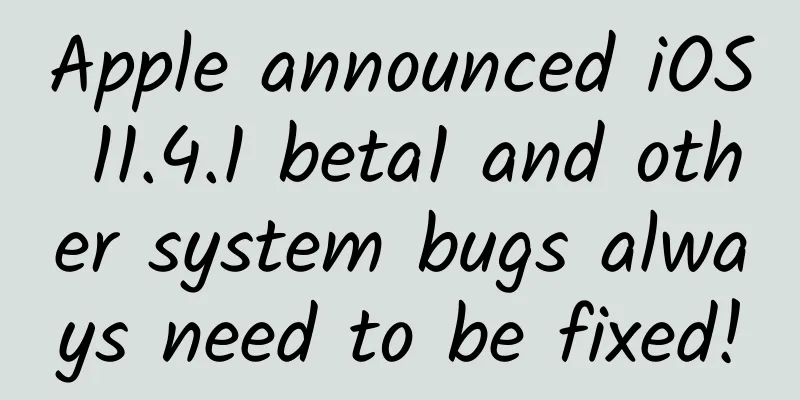There is a kind of bank whose "benefits" we all enjoy unintentionally

|
Produced by: Science Popularization China Author: Yu Yajing (Director of China General Microbiological Culture Collection Management Center) Producer: China Science Expo Editor's note: In order to decode the latest mysteries of life science, the China Science Popularization Frontier Science Project has launched a series of articles called "New Knowledge of Life" to interpret life phenomena and reveal biological mysteries from a unique perspective. Let us delve into the world of life and explore infinite possibilities. Everyone is familiar with banks. They are safe and can increase interest. Adults will deposit money they don't need for a period of time into banks and withdraw it from the bank when they need it. But in addition to this kind of financial bank, there is actually another magical bank - Biobank. As living beings, each of us stores something in them without knowing it, and often enjoys the benefits they bring without knowing it. Biobanking is also known as a biobank. Like financial banks, scientists, doctors or some companies will deposit biological materials obtained during their scientific research, medical treatment or development into a biobank, and then apply to withdraw them when needed. At the same time, biobanks have another characteristic that is different from financial banks, which is public welfare. In addition to using the biological materials stored in biobanks themselves, the most important thing is that they are shared with peers around the world through biobanks for academic research or industrial development, and jointly develop and utilize the precious biological samples stored in biobanks. Biobank is an important infrastructure for the development of biotechnology and bioindustry. There are numerous biobanks from scientific research to industry, from food to medicine, and from agriculture to industry. Interestingly, there are also so-called "four major banks" in biobanks, which respectively store four important biological resources: strains, genes, cells, and germplasm. One of the Big Four Banks: “Strain Bank” A strain bank, as the name suggests, is a place for preserving microbial strains. We humans cannot live without microorganisms in our daily lives. Our ancestors were aware of the existence of microorganisms very early and began to consciously use them. Electron microscopic image of budding reproduction of a yeast strain isolated from a crater lake (Photo credit: Li Aihua, China General Microbiological Culture Collection Management Center) Guess what kind of microorganism is this? This is the yeast that we cannot live without now. Yeast is round and plump, and when it sprouts, it will have small buds, which is very cute. Yeast can be used to make wine. Scientists from the Institute of Microbiology of the Chinese Academy of Sciences spent several years collecting, isolating and systematically studying yeast resources on the Qinghai-Tibet Plateau, and found a population among them. Through multi-gene and genome analysis, it was found that it was these yeasts that were spread to Europe through the Silk Road and became the origin of the lager beer yeast that is popular all over the world today. Yeast can also make sweet and soft steamed buns and bread; lactic acid bacteria can "transform" milk into yogurt and cheese; and the brewing of soy sauce and vinegar is also inseparable from various microorganisms. Not to mention that various edible fungi are actually unique microorganisms. A variety of edible fungi (Photo source: Veer Gallery) It is conceivable that without microorganisms, our dining table would probably become very monotonous! The China General Microbial Culture Collection Center has 110,000 strains of microorganisms from all over the world. Some of them can produce vitamins, antibiotics, and degrade plastics. Some can make farmland fertile, turn oil or corn into clothes we wear, and some can keep us energetic, healthy and slim. Microbial culture resources are like a huge treasure house waiting for our "exploitation". The second of the four major banks: "Gene Bank" The most important gene bank is the human gene bank. In addition, there are gene banks for important experimental animals, rare wild animals, rare plants, medicinal plants and microorganisms. What is a gene? In layman's terms, a gene is a book of life that defines how each person, animal, plant, and microorganism will basically grow. This book will be passed down from generation to generation. Therefore, understanding the book of genes is the beginning of our understanding of life. Now we have a variety of modern biotechnology methods, which can not only read the book of life, but also modify the book of life, so that animals, plants, and microorganisms can change in the direction we set. Even some human genetic diseases can be effectively treated through special gene modification methods. However, because the human book of life is too complicated, we must maintain a respectful and cautious attitude, and gene therapy still has a long way to go. The third of the four major banks is the "Cell Bank" A cell bank that we often hear about in daily life should be the umbilical cord blood bank. Why do we need to collect umbilical cord blood from newborn babies? Because umbilical cord blood contains a lot of stem cells. Stem cells have unlimited self-renewal ability and can develop into nerves, blood vessels or various tissues and organs. Therefore, when the child grows up, if some special cells are needed for treatment at a certain time, umbilical cord blood can be extracted, stem cells can be cultured and induced to differentiate into customized therapeutic cells, providing personalized treatment plans. Stem cell banks are more professional public service platforms. For example, the National Stem Cell Bank can provide quality-certified pluripotent stem cells to scientific research or businesses, helping researchers develop drugs or helping hospitals provide a wider range of precision medicine solutions. There are many medical cases now. For example, hematopoietic stem cell transplantation can be used to treat blood diseases such as lupus erythematosus, hemolytic anemia, and acute leukemia. Neural stem cells can be used to treat nervous system diseases such as cerebral palsy, spinal cord injury, motor neuron disease, Parkinson's disease, cerebral hemorrhage, sequelae of cerebral infarction, and sequelae of brain trauma. There are also some immune system diseases such as diabetes, dermatomyositis, myasthenia gravis, vascular diseases, sclerosis, etc. Stem cell therapy is also one of the treatment methods. The fourth of the four major banks is the “seed bank” Germplasm resource banks play a very important role in agriculture, forestry, animal husbandry and fishery. Whether it is the planting industry, breeding industry or aquatic industry, each industry has its own germplasm bank. This is also an important reason why we can now enjoy delicacies from all over the world. Many excellent agricultural products from home and abroad have been preserved in germplasm banks and introduced to suitable places for production, which has greatly enriched the variety of food on our table. For example, salmon, whiteleg shrimp, giant prawn, Australian freshwater lobster and crab can be farmed in the vast desert and at the foot of Tianshan Mountain in Xinjiang, my country. In the future, we may be able to move from "biobank" to "biosupermarket" After talking so much about biobanks, let’s imagine that if one day our scientists can understand everything from genes to proteins, from sequences to functions, that is, read the holy book of life clearly, perhaps the “biobank” can be transformed into a “biosupermarket”. In this way, we can not only use the biological materials we have stored, but also use artificial intelligence to design a variety of biological components and biological modules that do not exist naturally. Scientists only need to take these modules off the shelves of supermarkets and assemble them themselves to obtain various microorganisms, cells, animals or plants. They can produce vaccines, drugs, proteins or small molecule peptides, as well as plastics that are tougher than steel and fibers that are stronger than spider silk. Of course, the premise is that we can fully understand the book of life, and we also need strict and clear laws and regulations to constrain the development and application of "bio-supermarkets". Now, let us build a bio-bank and explore the mysteries of life! |
<<: #千万IP创科普# Beware! Up to 800℃! This "bedding" can be fatal if it catches fire
Recommend
Analysis of Pinduoduo’s “Shake for Cash” campaign operations!
Have you participated in Pinduoduo’s “Shake for C...
Bao Fan talks about entrepreneurship: Opening up the key points of entrepreneurship from the perspective of investment banks
Bao Fan, founder and CEO of China Renaissance Cap...
OPPO R17 Pro review: The fog-light gradient color plays with the trend, and the aesthetic triple camera amazes everyone
Photography technology has always been a fiercely...
For promotion on Xiaohongshu, just read this article.
This article will try to answer your questions: 1...
Playing in the snow for a long time can lead to this disease? Learn more about "snow blindness"
Reviewer of this article: Xu Qibin, associate chi...
"A year's rain falls in one day" may happen more frequently in the future
Recently, many parts of southern China have been ...
If China can do it, so can I? New car-making forces in Europe and the United States say: This is absolutely an illusion!
How many new car manufacturers are still survivin...
Besides rewards, what else are users interested in?
We want users to take action, but when inducement...
Introduction to the process of building Toutiao information flow ads
Pre-advertising preparation 1. Open an account. W...
How can community apps perform good product operations? 13 ways to promote community applications!
The key to the early success of community product...
The ninth episode of the Aiti Tribe Clinic: Java, Python, PHP, they all say they are simple
【51CTO.com original article】 Activity description...
Commercial Illustration System Course Basics + Advanced
Commercial illustration system course basics + ad...
Youdao Promotion's account opening process and display style
Youdao Promotion Account Opening Process To place...
Tianfu Chengdu Tea Tasting has its own star-rated studio [recommended collection]
Chengdu Pincha has its own studio: 135-5021-2450 ...









